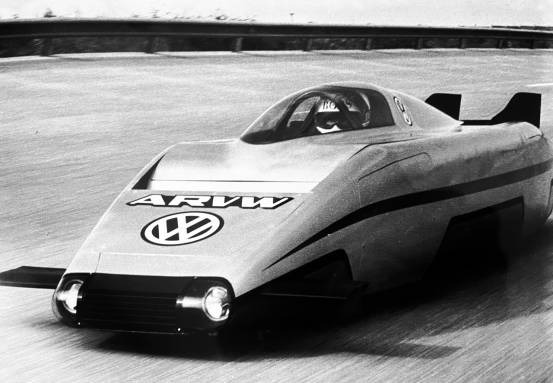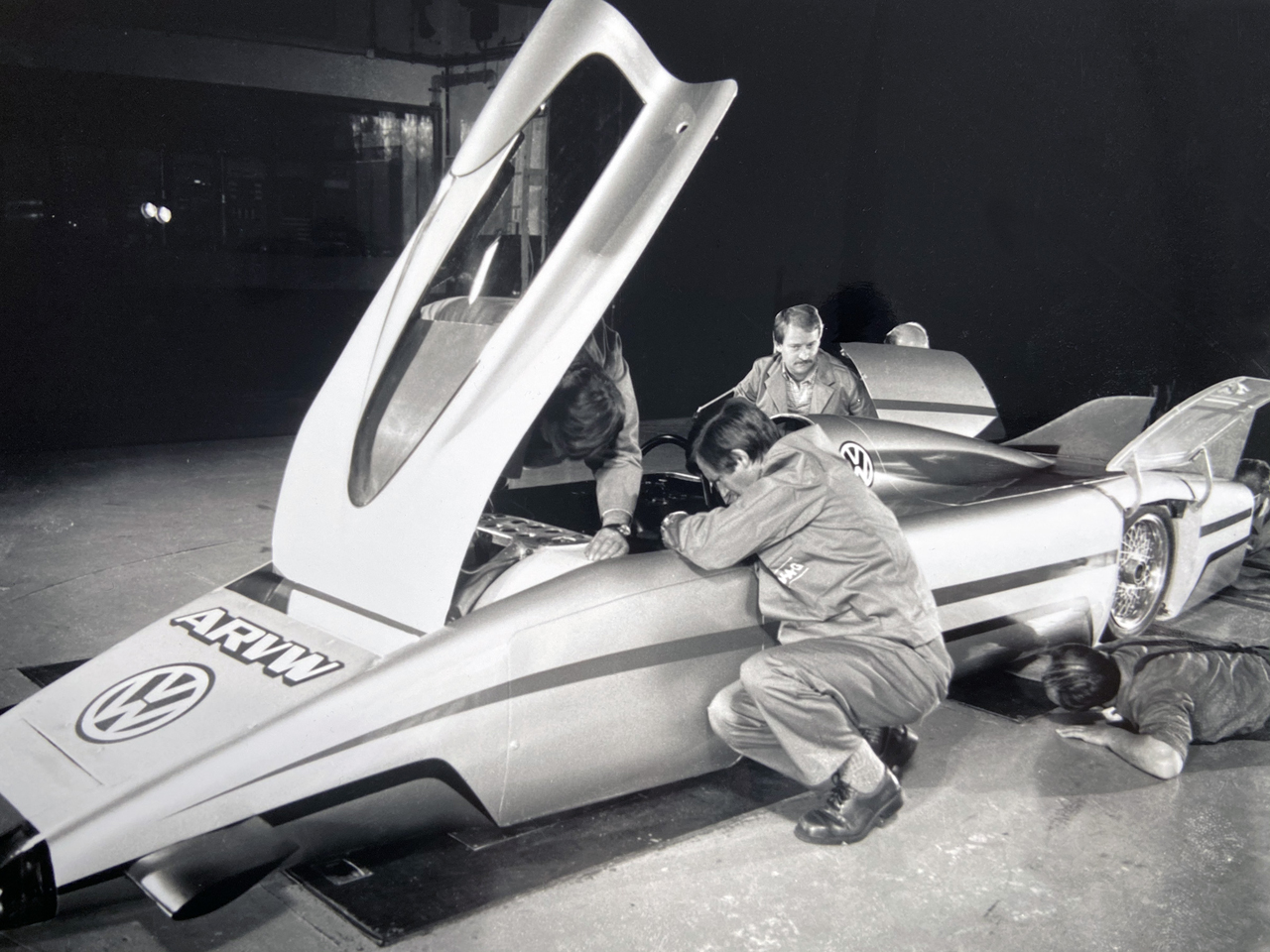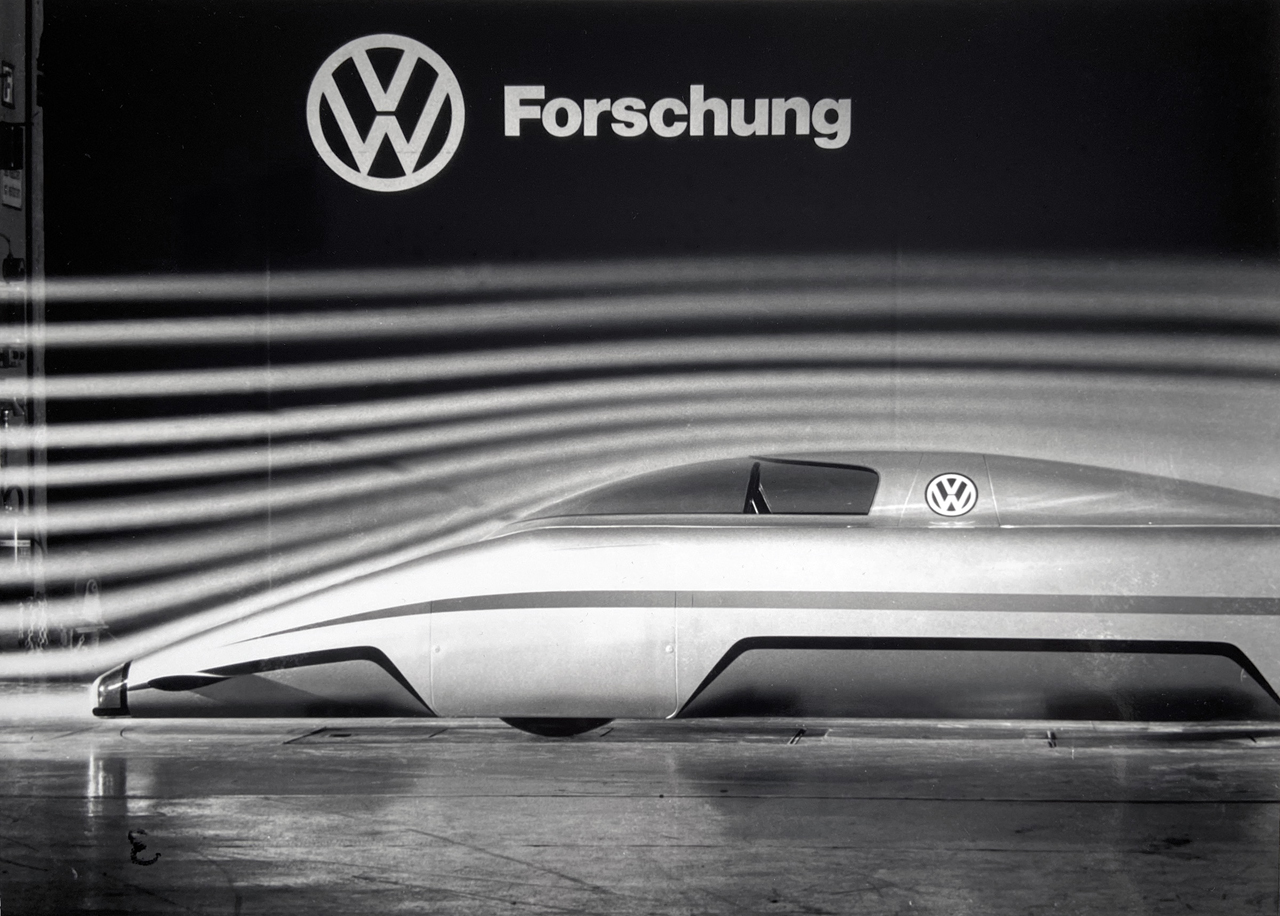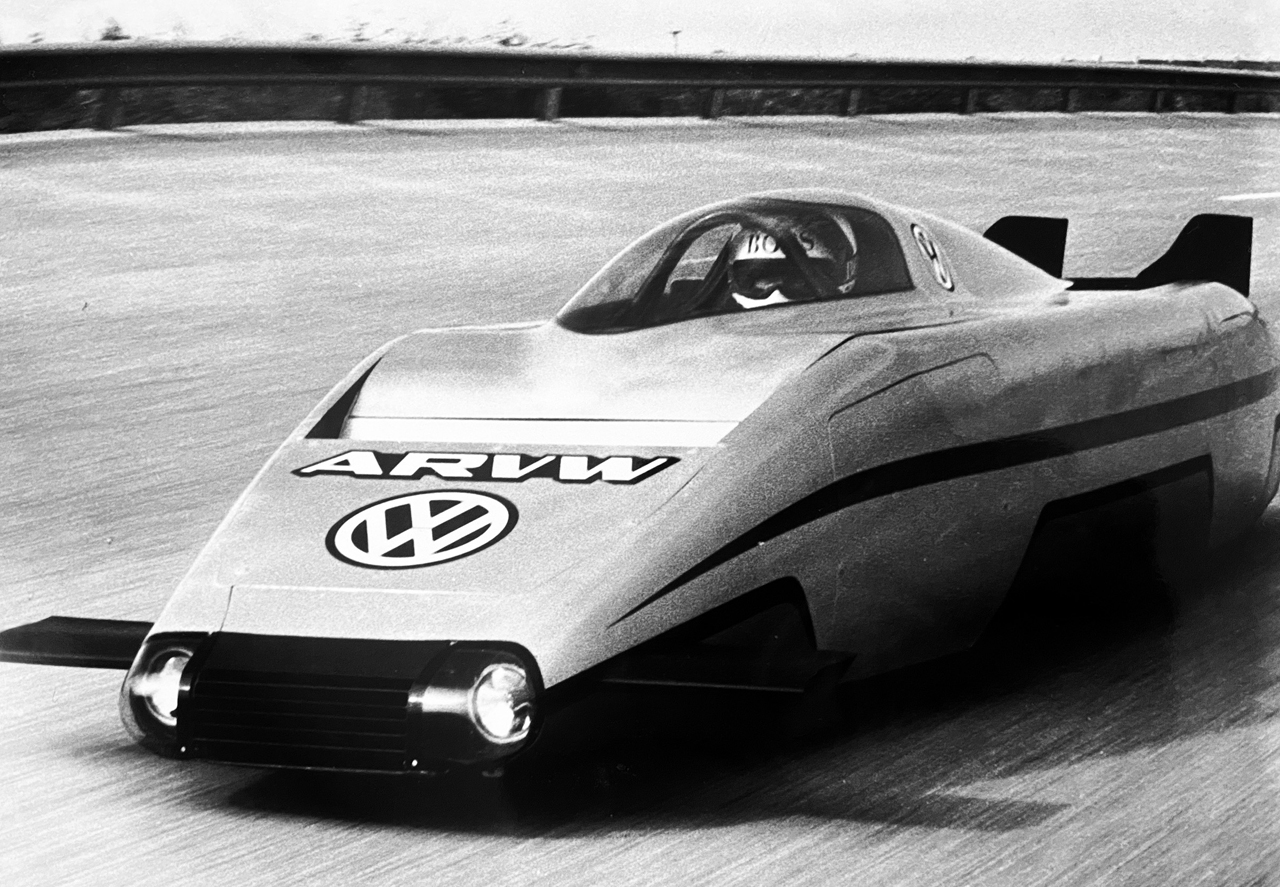The Most Aerodynamic Volkswagen Ever Built Was Designed In The '80s
In the modern EV age, aerodynamics have been prioritized sometimes over style to get as much driving range as possible out of battery packs. Today we know aerodynamic vehicles are more efficient, that fact wasn't as well-known decades ago. Back in the '70s, the oil crisis dealt a death blow to the iconic muscle cars packing V-8 engines that were so popular in the 60s. In 1980, Volkswagen designed the most aerodynamic car it has ever built called the ARVW.
The ARVW was built by Aerodynamic Research Volkswagen and was designed to demonstrate how aerodynamics and lightweight vehicle construction could generate high speeds from everyday power. One of the first challenges the design team had to overcome was how to fit a driver, powertrain, and four wheels into the smallest possible profile.

The resulting ARVW was only 33 inches tall and 43.3 inches wide. To maximize aerodynamics the vehicle had hidden wheels and a smooth underbody that featured movable fins to keep it stable at high speeds. VW constructed the vehicle using an aluminum frame covered by a fiberglass-and-carbon body.
Power for the vehicle was from a 2.4-liter turbocharged, in-line-six-cylinder engine that made only 177 hp. The engine was behind the driver and powered the rear wheels using a chain drive. Cooling that six-cylinder engine required a water tank that injected water into the turbocharger intake, helping to reduce cooling openings needed in the vehicle for the engine to operate.
The vehicle proved very successful with a coefficient of drag of 0.15. In October 1980, a team of engineers in a race driver went to the Nardo test track in Italy, where the vehicle hit 221 mph in the first hour. Ultimately, the vehicle topped out at 225 mph and set two world speed records of the process.



